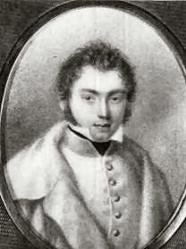
Mozart
We should never forget that the supposedly rarefied air and sterile environment of classical music is numerously inhabited by an incredible number of colourful personalities. Take for example Count Joseph Deym von Střítež, who originated from Moravia but found his way into the Austrian capital of Vienna in the last quarter of the 18th century. At one point he killed an opponent in a duel and was forced to leave the city. However, the Count returned only a couple days later under the alias Mr. Müller. “Mr. Müller” maintained an exhibition gallery of wax figures of an exotic and heroic nature that featured “a life-size lady en negligée sitting at a player-piano, and even a Bedroom of the Graces, which according to an eye-witness was a voyeuristic, semi-erotic display featuring a young girl sleeping on a bed, mellowly lit by alabaster lamps and watched over by Venus herself.” What is most interesting, however, is the fact that a number of clockwork organs and musical clocks provided the musical ambiance.
Clockwork Organs, not to be confused with the chiming varieties that provide an hourly chiming sequence, are clocks that have been combined with some form of mechanical instrument. These musical clocks could perform a repertory of tunes, which were provided on pinned cylinders, not unlike the mechanism used in music boxes. Makers of organ-playing clocks in London preferred the sound of tuned bells, whereas their Viennese colleagues produced a special form of mechanical instrument — using wooden pipes — called the “Flötenuhr.” Roughly translated as “flute-playing clock,” Joseph Haydn produced thirty-two compositions and adaptations for this particular instrument, with Ludwig van Beethoven and Wolfgang Amadeus Mozart contributing three compositions each.

Joseph Deym

